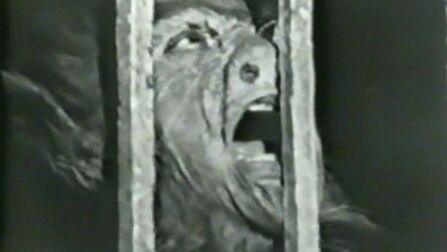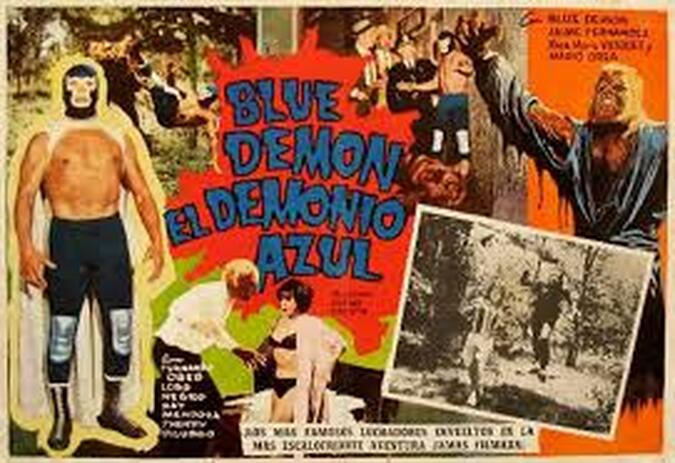 Welcome to a weekly series in which Doris V. Sutherland takes readers on a trip through the history of werewolf cinema... ...Blue Demon (or Blue Demon el Demonio Azul to give the full bilingual title to this 1965 Mexican release directed by Chano Urueta and written by Rafael García Travesi and Fernando Osés) opens with a werewolf causing trouble, leading some to suspect that a notorious mad scientist who conducted experiments in lycanthropy decades ago has returned. But who is qualified to investigate such a deadly phenomenon? The answer is simple: the masked wrestler known as the Blue Demon! As it happens, the Blue Demon (played by himself) has already noticed strange things happening; a number of his fellow wrestlers have mysteriously vanished. He eventually learns that the culprit is the grandson of the previous mad scientist, who has been kidnapping wrestlers and turning them into werewolves for his own nefarious purposes. No history of monster movies would be complete without acknowledging the noble tradition of Mexican wrestler films. In the sixties and seventies, luchadores were more than colourfully-dressed sportsmen: they were cinematic superheroes, doing battle against an array of fanciful foes. El Santo was the most illustrious hero of Lucha Libre, but the Blue Demon was a worthy rival. The attempt to mash up costumed wrestling with Gothic horror is, of course, thoroughly silly; the Blue Demon looks awfully chilly when he investigates the scientist’s eerie, cobwebbed old hideout wearing only mask, cape, and trousers. Yet it’s a combination that had also, by this point, shown itself to be popular with audiences. As incongruous as it may be, the wrestling element (even the lycanthropes can grapple) really does give the film a level of energy that many monster b-movies lack. Blue Demon doesn’t make a particularly large contribution to the development of the werewolf genre. It can’t even lay claim to being the first film to pit a heroic muscleman against a lycanthrope, having been preceded by Hercules, Prisoner of Evil. But it does have one novelty to its name: it multiplies the werewolf. Most films in the genre up until this point had contented themselves with a single werewolf each, occasionally adding a secondary lycanthrope who exists to turn the main character. But The Blue Demon features three werewolves—an obvious case of the werewolf genre blurring into the action movie formula where the hero must work his way through a few underlings before confronting the main villain. Mexican wrestler films like Blue Demon can be seen as part of a larger boom in costumed heroes that occurred throughout the sixties. American superhero comics were experiencing their so-called Silver Age and come 1966 they would give rise to a TV hit in the Adam West Batman series; that same year, the tokusatsu hero Ultraman would blast onto Japanese screens. Mexico’s pantheon of wrestlers were just right for the moment—and they did their own stunts, too. Luchadores and werewolves may seem an unlikely combination. But the truth is, the simple pleasure of seeing the Blue Demon grapple with a wolfman—bouncing off trees like the fence of a wrestling ring as he lands each kick—fits right into a vogue for colourful heroes and weird villains. By Doris V. Sutherland
0 Comments
Leave a Reply. |
Archives
March 2023
|

 RSS Feed
RSS Feed